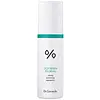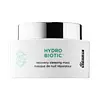What's inside
What's inside
 Key Ingredients
Key Ingredients

 Benefits
Benefits

 Concerns
Concerns

 Ingredients Side-by-side
Ingredients Side-by-side

Water
Skin ConditioningGlycerin
HumectantCaprylic/Capric Triglyceride
MaskingButyrospermum Parkii Butter
Skin Conditioning1,2-Hexanediol
Skin ConditioningPolyglyceryl-3 Methylglucose Distearate
EmulsifyingDicaprylyl Carbonate
EmollientGlyceryl Stearate Se
EmulsifyingBehenyl Alcohol
EmollientCentella Asiatica Extract
CleansingCarbomer
Emulsion StabilisingTromethamine
BufferingSodium Stearoyl Glutamate
CleansingEthylhexylglycerin
Skin ConditioningMicrocrystalline Cellulose
AbsorbentAdenosine
Skin ConditioningDisodium EDTA
Cellulose Gum
Emulsion StabilisingMadecassoside
AntioxidantBeta-Glucan
Skin ConditioningActinidia Arguta Fruit Extract
Skin ConditioningTocopherol
AntioxidantWater, Glycerin, Caprylic/Capric Triglyceride, Butyrospermum Parkii Butter, 1,2-Hexanediol, Polyglyceryl-3 Methylglucose Distearate, Dicaprylyl Carbonate, Glyceryl Stearate Se, Behenyl Alcohol, Centella Asiatica Extract, Carbomer, Tromethamine, Sodium Stearoyl Glutamate, Ethylhexylglycerin, Microcrystalline Cellulose, Adenosine, Disodium EDTA, Cellulose Gum, Madecassoside, Beta-Glucan, Actinidia Arguta Fruit Extract, Tocopherol
Water
Skin ConditioningDimethicone
EmollientPropanediol
SolventGlycerin
HumectantSodium Chloride
MaskingDimethicone/PEG-10/15 Crosspolymer
Lactococcus Ferment Lysate
Skin ConditioningHexyldecanol
EmollientInulin
Skin Conditioning1,2-Hexanediol
Skin ConditioningSodium Benzoate
MaskingYogurt Powder
PEG-10 Dimethicone
Skin ConditioningButylene Glycol
HumectantTamarindus Indica Seed Polysaccharide
Skin ConditioningSodium Citrate
BufferingCaprylhydroxamic Acid
Tocopheryl Acetate
AntioxidantLavandula Angustifolia Oil
MaskingTrisodium Ethylenediamine Disuccinate
Bisabolol
MaskingCetylhydroxyproline Palmitamide
Skin ConditioningStearic Acid
CleansingHoney
HumectantBrassica Campestris Sterols
EmollientRosa Damascena Flower Oil
MaskingCamellia Sinensis Leaf Extract
AntimicrobialPhenoxyethanol
PreservativeVitis Vinifera Seed Extract
AntimicrobialBoswellia Serrata Extract
Skin ConditioningHoney Extract
HumectantChlorophyllin-Copper Complex
AntioxidantAspalathus Linearis Extract
Skin ConditioningSaccharomyces Polypeptides
Skin ConditioningWater, Dimethicone, Propanediol, Glycerin, Sodium Chloride, Dimethicone/PEG-10/15 Crosspolymer, Lactococcus Ferment Lysate, Hexyldecanol, Inulin, 1,2-Hexanediol, Sodium Benzoate, Yogurt Powder, PEG-10 Dimethicone, Butylene Glycol, Tamarindus Indica Seed Polysaccharide, Sodium Citrate, Caprylhydroxamic Acid, Tocopheryl Acetate, Lavandula Angustifolia Oil, Trisodium Ethylenediamine Disuccinate, Bisabolol, Cetylhydroxyproline Palmitamide, Stearic Acid, Honey, Brassica Campestris Sterols, Rosa Damascena Flower Oil, Camellia Sinensis Leaf Extract, Phenoxyethanol, Vitis Vinifera Seed Extract, Boswellia Serrata Extract, Honey Extract, Chlorophyllin-Copper Complex, Aspalathus Linearis Extract, Saccharomyces Polypeptides
Ingredients Explained
These ingredients are found in both products.
Ingredients higher up in an ingredient list are typically present in a larger amount.
1,2-Hexanediol is a synthetic liquid and another multi-functional powerhouse.
It is a:
- Humectant, drawing moisture into the skin
- Emollient, helping to soften skin
- Solvent, dispersing and stabilizing formulas
- Preservative booster, enhancing the antimicrobial activity of other preservatives
Glycerin is already naturally found in your skin. It helps moisturize and protect your skin.
A study from 2016 found glycerin to be more effective as a humectant than AHAs and hyaluronic acid.
As a humectant, it helps the skin stay hydrated by pulling moisture to your skin. The low molecular weight of glycerin allows it to pull moisture into the deeper layers of your skin.
Hydrated skin improves your skin barrier; Your skin barrier helps protect against irritants and bacteria.
Glycerin has also been found to have antimicrobial and antiviral properties. Due to these properties, glycerin is often used in wound and burn treatments.
In cosmetics, glycerin is usually derived from plants such as soybean or palm. However, it can also be sourced from animals, such as tallow or animal fat.
This ingredient is organic, colorless, odorless, and non-toxic.
Glycerin is the name for this ingredient in American English. British English uses Glycerol/Glycerine.
Learn more about GlycerinWater. It's the most common cosmetic ingredient of all. You'll usually see it at the top of ingredient lists, meaning that it makes up the largest part of the product.
So why is it so popular? Water most often acts as a solvent - this means that it helps dissolve other ingredients into the formulation.
You'll also recognize water as that liquid we all need to stay alive. If you see this, drink a glass of water. Stay hydrated!
Learn more about Water